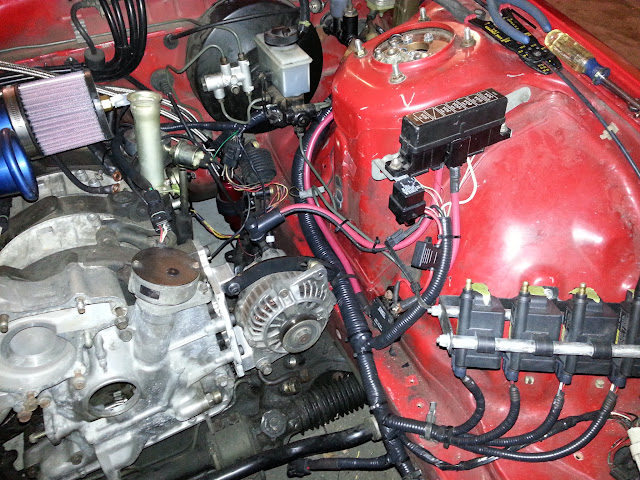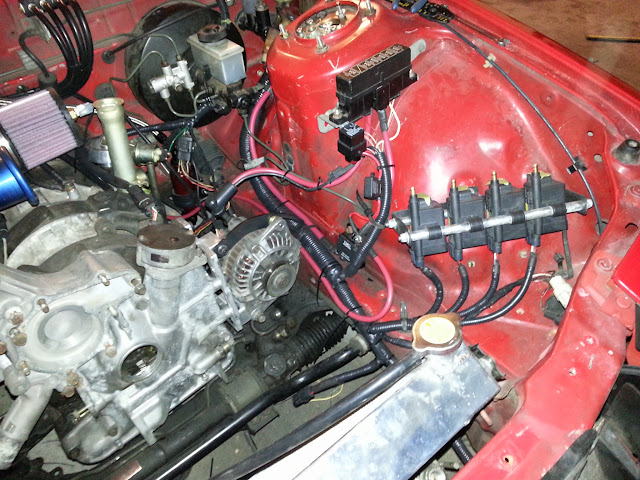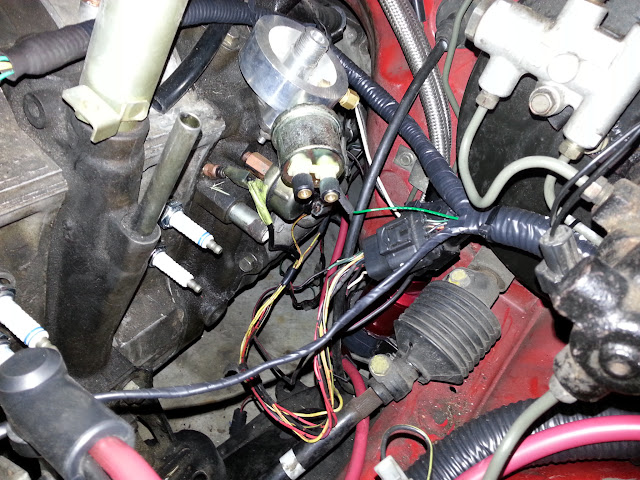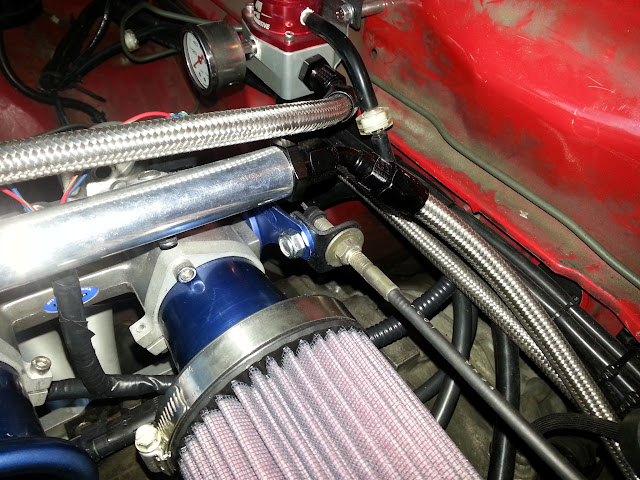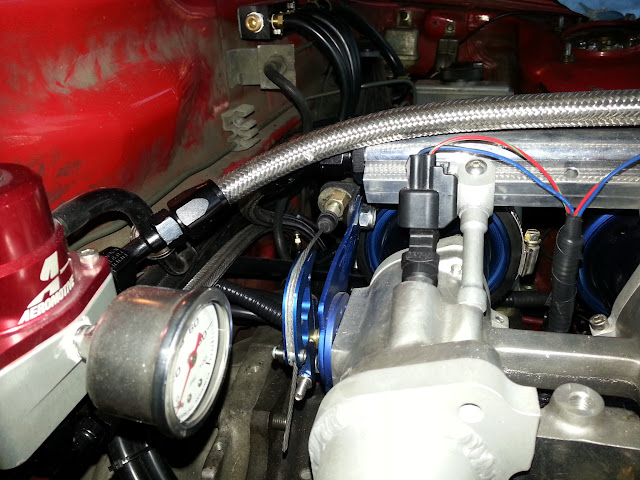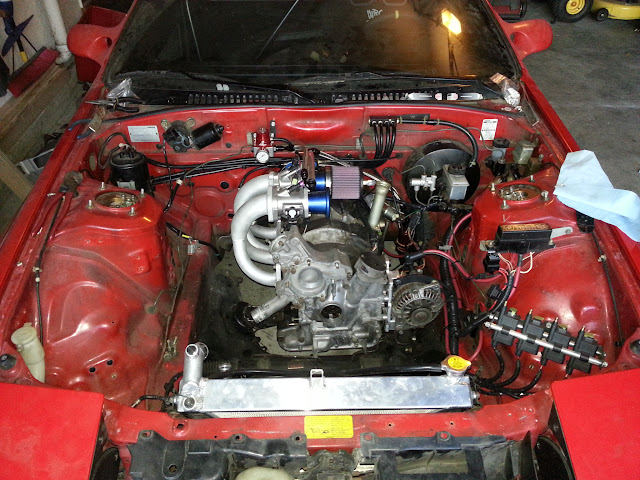Ordered the plug wires Friday on the way home from work. Yeah, it was that easy. I'll highly recommend Magnecor to anyone. Just make sure you know what you want upfront (familiarize yourself with their catalog). The conversation literally went like this:
Me: Hi I'd like to order some custom spark plug wires.
Magnecor Rep: What kind of car is this for?
Me: '89 Mazda RX-7 with the 1.3L rotary, but I've moved the ignition components all around and I have aftermarket coils.
Magnecor Rep: Okay, so what were you looking at?
Me: Your KV85 wires in the "C" configuration, 30 inches long.
Magnecor Rep: So that's the 8.5 mm race wire with 90 deg HEI-type ignitor terminals and straight spark plug terminals?
Me: Yep, that sounds right. I'd also like to pick up two sets of your wire organizers.
Magnecor Rep: No problem. Anything else?
Me: Just a quick question. Since I estimated the wire lengths and erred on the long side, if they're too long could I send the wires back to be shortened?
Magnecor Rep: No that won't be a problem.
All that and I was told they should ship today. Total cost was $110 including shipping. That's hard to beat considering the cost of decent wires, terminals, and the proper crimping tool.
I'm running out of things to do while I wait for the remaining electrical stuff. Just about everything else requires the dummy engine to be removed. Over the weekend I rigged up the stock throttle cable to the ITB, which was more work than anticipated. I ended up having to modify the cable guide arm and cam a little to accept the stock wire. I also made a little bracket out of my favority 1/8" flat stock:
I still need to modify my bracket a little to make it so I can remove the cable without pulling everything apart. I also really want to get rid of the blue now but I really don't want to have to sand down and polish everything. Is there a way to remove anodized coating chemically?
The biggest difficulty was getting the range of motion of the pedal to match the TB. Unmodified pedal to the floor = ~75% open. After "playing" with the pedal assembly for a bit I got everything to work out. The only thing I don't like if the spring on the TB is a lot weaker than the spring on the stock TB so the pedal is really soft. If anyone has a suggestion for increasing force I'm all ears.
Finally, here's another shot of the engine bay in its current state:

